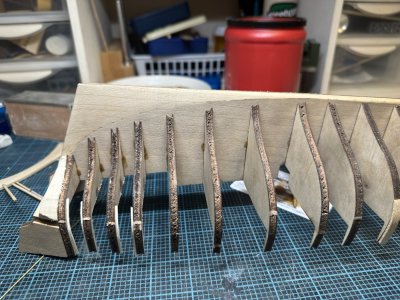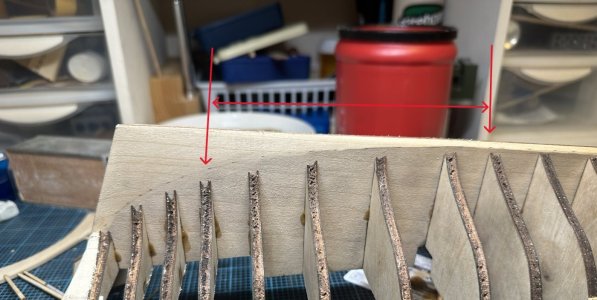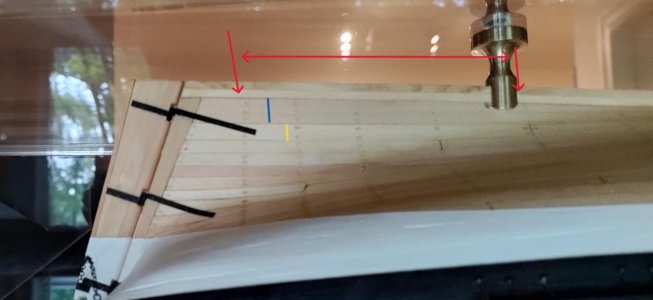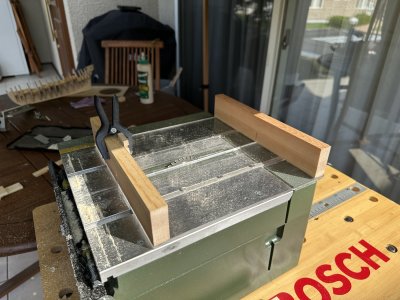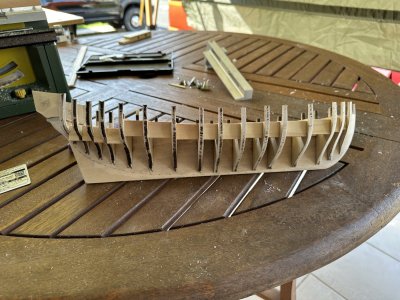Thanks for that input, Chuck, and the kind words. I do think you’re correct and a re-do is in order.Namabiiru! Looking great!
I see what you are saying about a saw blade. I think this is because of the contrast in metal colors and knowledge of the origin of the tiara. Perhaps if it were curved a bit? As to Lill herself, you did a great job getting her top off. Although her arms appear a little thick, I think you can cure the proportion problem by shading. Dark shadows where you want to reduce and highlight the line of the arms - this will keep the eye on the thin line of highlighting and make her arms appear slender and supple. You say you're not a figure painter. You have also claimed lack of skills. One of these things, IMHO, is not quite trueSo, I'm confident that Lill will be a stunner once you've painted her, either because you have the skill or will have the skill when the time comes.
Hey, framing complete! I see that the cabin space is nicely open. I look forward to seeing what you make there! As to the glass - I think it looks very convincing, nicely translucent. My question would be whether translucent is enough? Since you are going to the effort of building out the main cabin I'm thinking you're wanting to be able to see what's in there? Maybe transparent is the way to go? This means that you might have to abandon the idea of representing colonial era glass and cutting individual panes.
Just some thoughts! I'm really enjoying your work, my friend!
Blessings. Peace. Gratitude.
Chuck
For the tiara, I did experiment with curving it, but my limited recollection of geometry was confirmed that by bending it, the hole gets too small. Enlarging the hole makes it too fiddly. Going to press on as is, and if it still doesn’t look right, it’ll Mr Surfacer to the rescue.




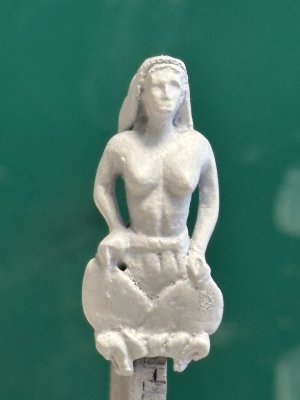
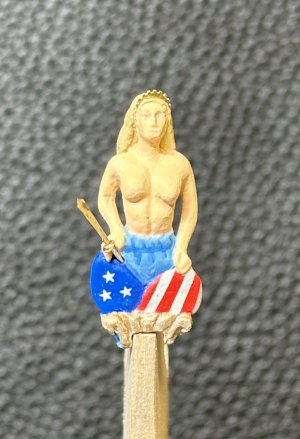
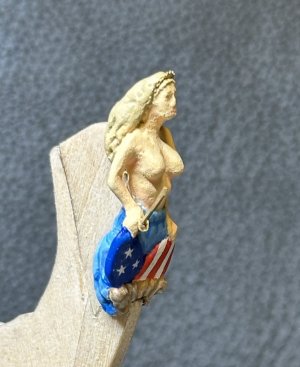
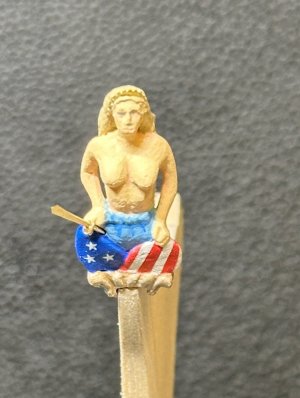
 Any way you slice it she's a stunner! The painting came out great! CONGRATULATIONS!
Any way you slice it she's a stunner! The painting came out great! CONGRATULATIONS!


